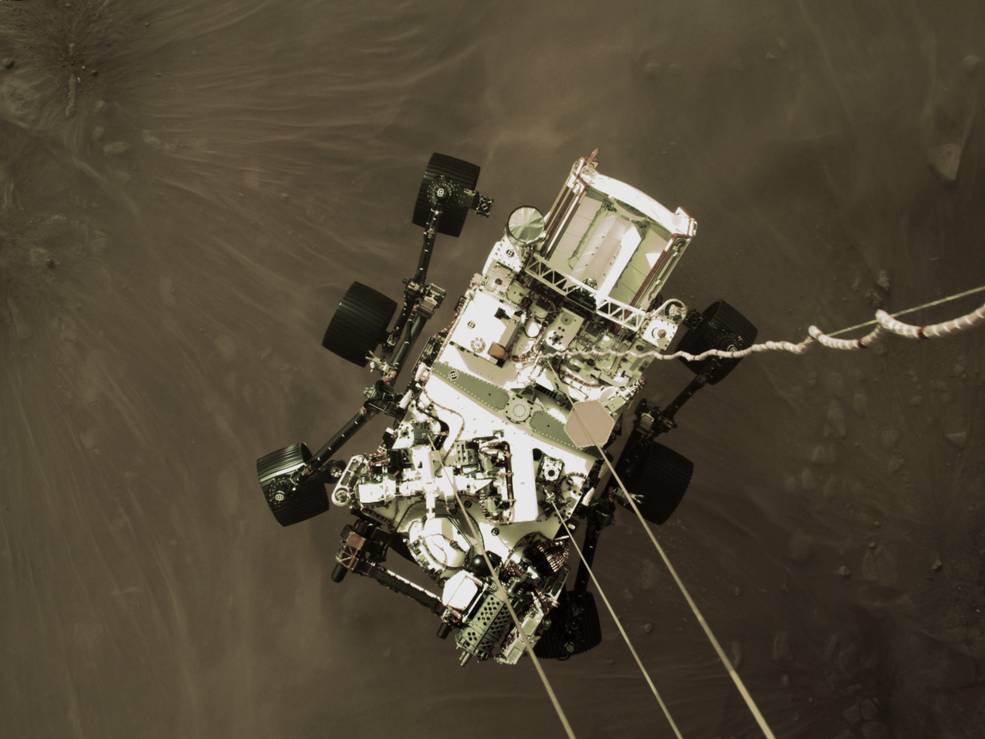DOE steps up plutonium production for future space exploration

This high-resolution still image is from a video taken by several cameras as NASA’s Perseverance rover touched down on Mars on February 18. Credits: NASA/JPL-Caltech
NASA’s Perseverance rover, which successfully landed on Mars on February 18, is powered in part by the first plutonium produced at Department of Energy laboratories in more than 30 years. The radioactive decay of Pu-238 provides heat to radioisotope thermoelectric generators (RTGs) like the one onboard Perseverance and would also be used by the Dynamic Radioisotope Power System, currently under development, which is expected to provide three times the power of RTGs.
Idaho National Laboratory is scaling up the production of Pu-238 to help meet NASA’s production goal of 1.5 kg per year by 2026, the DOE announced on February 17.






